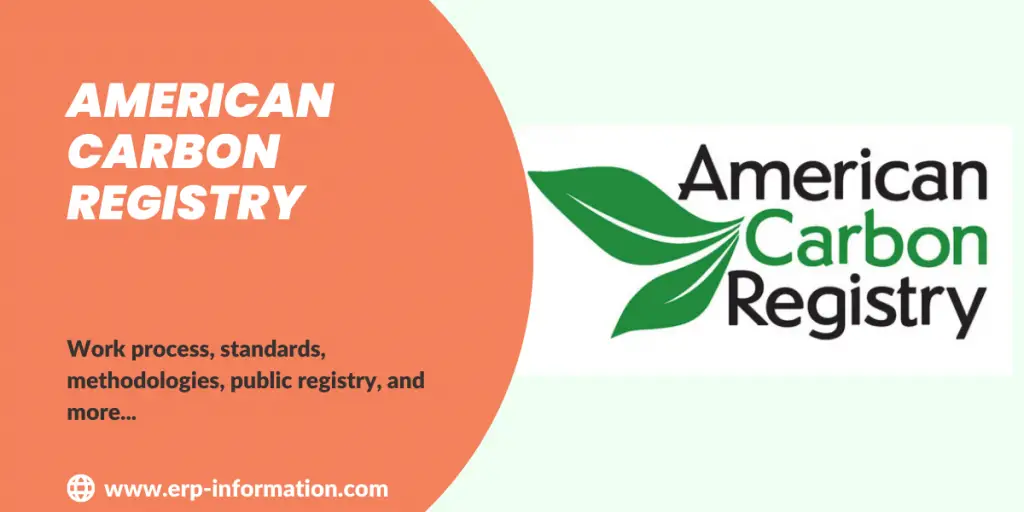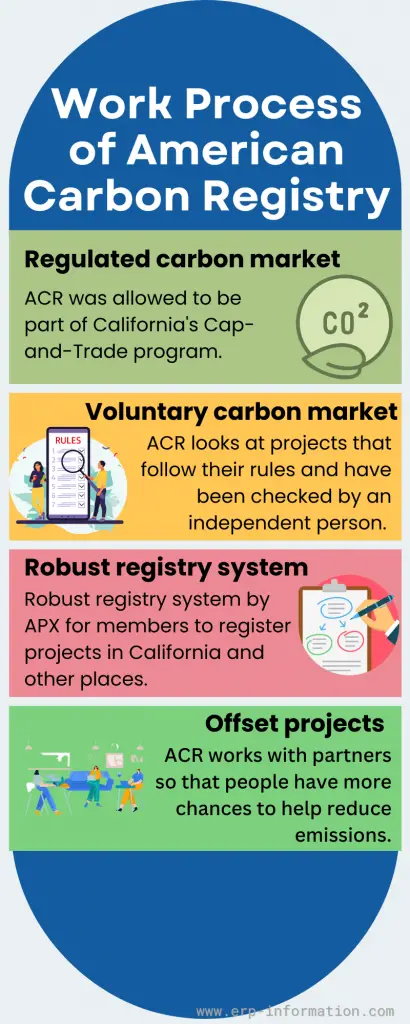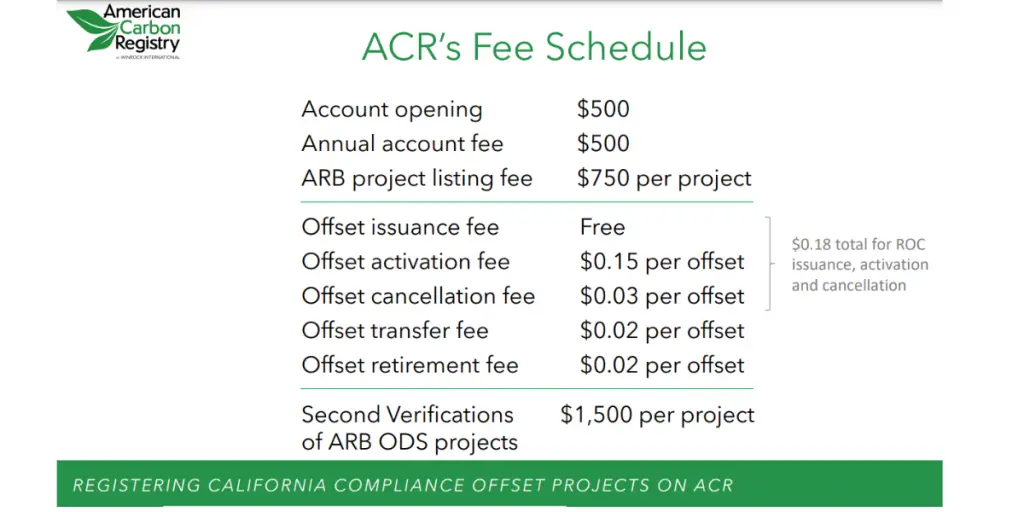Carbon offset registries are important for reducing emissions. They keep track of projects that reduce air pollution. Those projects get certified, and the registries credit those who worked on them. This helps make sure that the work is done properly and taken seriously.
American Carbon Registry is one of them, which certifies that the industry has taken action to reduce carbon emissions.
This blog post provides knowledge about American Carbon Registry, its work, methodologies, and standards.
About American Carbon Registry
The American Carbon Registry (ACR) was founded in 1996 and helps stop climate change. ACR uses science-based ideas to help reduce carbon in agriculture and transportation. ACR registry is a nonprofit enterprise operated by Winrock International.
Winrock is an organization that works to make sure carbon offset projects are reliable and trustworthy. It sets the standards for how these projects should be done and continue developing new ideas to improve them. That helps people reduce their emissions and protect the environment.
Work Process of American Carbon Registry
ACR is responsible for checking and registering projects that reduce the carbon dioxide from the air. Every project must follow specific rules and be reviewed carefully by ACR. One offset equals one metric tone of carbon dioxide taken away from the atmosphere. ACR has different regulations for markets like California, ICAO, and the volunteer carbon market.
Regulated carbon market
- California-Cap-and-Trade: In 2012, ACR was allowed to be part of California’s Cap-and-Trade program. ACR works with the Air Resources Board (ARB) to ensure projects that help reduce carbon in the air are listed and verified. The ARB gives special certificates showing these projects are approved for this program.
- International Civil Aviation Organization: In March 2020, the International Civil Aviation Organization (ICAO) allowed ACR to offer special emission reduction units. These units can be used to help meet the needs of the Carbon Offsetting and Reduction Scheme for International Aviation (CORSIA).
Voluntary carbon market
ACR has special verified emissions reductions (VERs) called Emission Reduction Tons or ERTs. One ERT equals the amount of carbon dioxide removed from the air that would have been one metric tonne.
ACR looks at projects that follow their rules and have been checked by an independent person. They ensure the projects use the right science-based standards and methods to measure carbon.
Robust registry system
ACR runs a secure, robust registry system by APX for members to register projects in California and other places. They can record the production, buying, and retiring offsets that have been checked independently.
Offset projects
ACR keeps track of different kinds of projects. It allows you to read the rules for each project type to see which ones you can use. In addition, ACR works with partners so that people have more chances to help reduce emissions and get involved in the carbon market.
Methodologies
Some American Carbon Registry methodologies are listed below.
- Advanced refrigeration systems
- Destruction of Ozon-depleting substances and High-GWP foam
- Afforestation and Reforestation of degraded lands
- Improved Forest Management(IFM) on federal US forest lands
- Restoration of California Deltaic and Coastal Wetlands
- Restoration of Pocosin Wetlands
- Carbon capture and storage projects
- Landfill gas destruction and beneficial use projects
- Capturing and destroying Methane from coal and Trona mines in North America
American Carbon Registry Standard
The American Carbon Registry (ACR) has rules that projects must follow to measure and report how much pollution they are reducing accurately. This is called the ACR Standard. If projects can meet these standards, ACR will give them certificates for pollution reduction which people can buy or sell. The current version is ACR 7.0.
- ACR wants to ensure that projects using their standards and methods are of high quality, no matter if standards are used for rules or regulations.
- They want the project-based offsets to be real, extra, permanent, not leaked away, and accurately measured.
- An independent third party must check the projects; results can only be used once.
ACR Validation and Verification Standard
The American Carbon Registry (ACR) needs someone independent to check that their carbon offset projects follow the ACR Validation and Verification Standard. This checking is done to make sure the project meets certain guidelines.
The people doing this checking have to be approved by ACR, and they must have special training. They must also follow the rules on the ACR webpage for Validation and Verification.
ACR Public Registry
ACR provides links on its website to reports showing information about projects and how many offsets were issued, canceled, and retired. You can also find the balance in the buffer account and search for serial numbers.
In addition, it allows you to sort the reports by clicking on the headings and printing them or downloading them as a PDF or CSV file.
Project report link
The Projects Report lists all the projects that have gone to the Registry by choice or law. It includes details like what kind of project it is, its location, and if it’s finished yet. You can also find links to get more information about each project.
Issued credits
The Issued Credits Report tells you about all the offsets issued. This includes the name and type of project, location, how many offsets were given out, when they were given out, and special numbers to identify them. The report also contains links to read more about the project.
Retired credits
The Retired Credits Report shows information about offsets that were retired in the Registry. This report includes the name and type of project, location, how many credits were retired when they were retired, the serial numbers, why, and who received them.
Canceled credits
The Canceled Credits Report tells you about offsets that have been canceled. An offset is like an ERT, California Registry Offset Credit, or California Early Action Offset Credit. The report will have info like the project name and type, where it’s located, how many offsets were canceled, when it was canceled, and why it was canceled. It also includes serial numbers.
Buffer pool account balance and serial number search
The Buffer Pool Account Balance report shows how much money the ACR account saves if something bad happens with a forest carbon project.
The Serial Number Search report helps you find information about offsets by looking at their serial number.
How to activate ACR?
- View public reports
- Open an ACR account
- Login the account
- Enter project data and upload the documents
- View Invoice
- Activate
ACR account opening fees
The below screenshot shows the fee schedule for account opening of ACR.
FAQs
What are the main international carbon registries?
The main international carbon registries are American Carbon Registry(ACR), Climate Action Reserve(CAR), Gold Standard, verra carbon standard(VCS), Chicago Climate Exchange, Global Carbon Project, Global Atmosphere Watch, and Carbon Trust, etc.
What are the different types of American Carbon Registry accounts?
The American Carbon Registry has four types of accounts. These are Project Developer Account, Corporate Account, Transaction Account, and Project Validation and Verification Body (VVB) Account.
How are carbon credits calculated?
One credit equals one ton of less greenhouse gas in the air. This is measured in tons of CO2 equivalent (tCO2eq). The World Bank pays for these credits through special programs, like Emissions Reduction Payment Agreements (ERPAs).
Conclusion
Overall, the American Carbon Registry has been a major force in promoting voluntary carbon markets and reducing emissions across the World. By establishing standards to make emissions data transparent while providing verification and monitoring services, they have enabled projects that reduce carbon emissions to be recognized, validated, tracked, and credited.
We hope this article successfully provided detailed knowledge of the American Carbon Registry.
Reference


